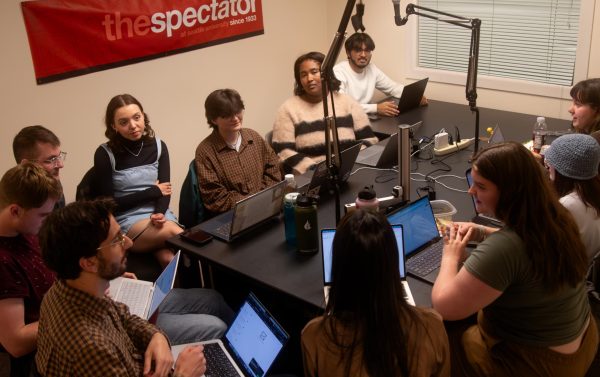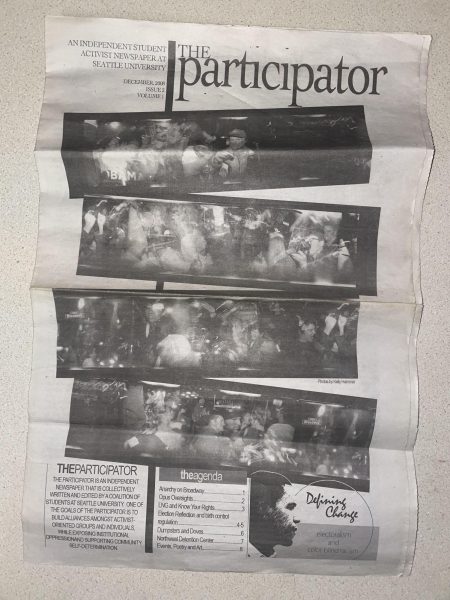Seattle U Ranked as One of the Most Diverse Schools in the Country

Throughout the college application process, many high schoolers use college ranking websites as a resource for prospective students to learn more about the types of schools they are applying to. One of these websites, College Factual, an independent organization, recently gave Seattle University a diversity score of 97.15 out of 100. This makes Seattle U’s diversity ranking 101 out of 2,475 colleges nationwide, or in the top 3% nationally.
College Factual determines their diversity scores through data from the Integrated Postsecondary Education Data System (IPEDS), which is data colleges report to the Department of Education. They consider a combination of location, ages, gender and ethnicity of students. Of these, Seattle U ranked top 8%in geographic diversity, 66%in gender diversity, 67%for age diversity and 12% in racial diversity.
Geographically, 62.6% of the Seattle U student population comes from out of state and even internationally with students coming in from 37 outside countries.
For gender diversity, Seattle U obtains a ratio of 60.6% of female students and 39.4% male students, placing them at 1,777 out of 2,718. For age diversity, Seattle U ranked 1,993 out of 3,012 with almost half of the student population being 18 to 21-years-old.
With many future students looking at this information to inform their decisions, some students hoped College Factual would include more categories. Tripp Ceyssens, a first-year communications major, described groups that College Factual could have included in their methodology.
“They’re missing political diversity, which I think is important on different campuses, and they don’t talk about religious diversity,” Ceyssens said.
He was also disappointed that information about physical and mental disabilities among the student body was not available.
College Factual had also separated family income from their diversity scores. They encouraged students to look at that information on another page they provided. Seattle U students come from economic backgrounds above the national average. 46.1% of students at Seattle U come from families that make over $75,000 a year, and 96% of first-year students are given financial aid. 55%of the financial aid is from scholarships, 25% from state grants and 20% are federal grants.
Jaedyn Fedd, a first-year public affairs major and member of the honors program, would have preferred for College Factual to include familial income.
“Surveys often try to separate race and economic status when, even though it’s a good pipe dream, the reality is, they’re intertwined,” Fedd said.
Fedd explained that universities are predominantly white, and attested to her own experiences in the honors program, mentioning that her cohort is mostly white.
The data from College Factual repeated her point. 46.2% of students are white at Seattle U. This was the highest percentage in the racial data. Asian students made up the second biggest group, 16.2% of the student body. For the faculty, 61% are white, and the second highest is the “ethnicity unknown” group, at 16.8%.
Fedd expressed frustration with some of the missing data, pointing out that the categories “non-resident alien” and “other” make up over 20 percent of the data for students.
“That’s a huge chunk missing, and this is for only Seattle U alone,” Fedd said.
Nicolas Castillo, a first-year political science student, brought up other points regarding ethnic diversity. He mentioned that students tend to socialize in groups of the same race, so it might be hard to see diversity.
“While the diversity by number would be correct, when it comes to how well people would mix together, I think it might not be very reflective,” Castillo said.
Michelle Kim, the director at the Office of Multicultural Affairs, brought up a point involving the culture of a school in a written statement. Kim mentioned that the diversity of a school may not indicate a good student culture.
“‘Diversity’ and ‘inclusion’ are two related but separate things. Diversity is about numbers and representation. Inclusion is about culture and a sense of belonging,” Kim wrote.
She felt that the data was accurate, but also encouraged students to look more closely at the culture of colleges they apply to.
As students hope for the data to be as reflective as possible, and for more categories to become available, the way a college fosters community remains essential in the college application and selection process.










